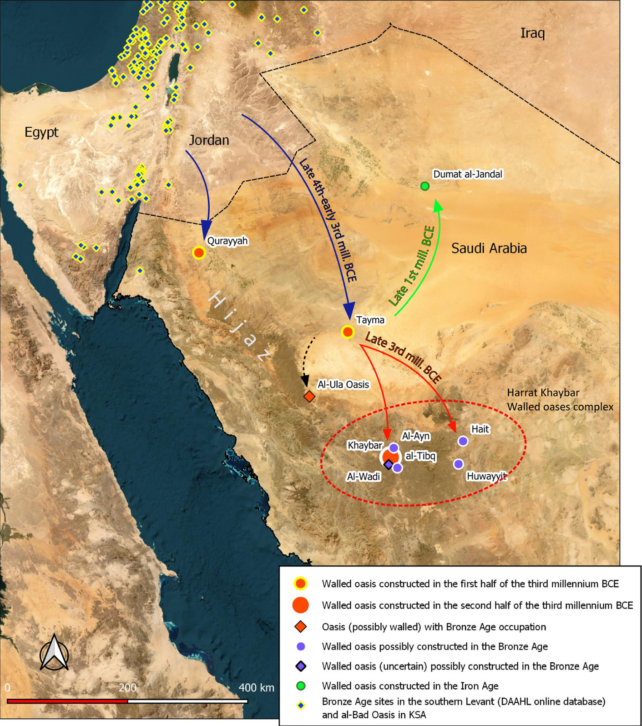The discovery of a 4,000-year-old fortified city hidden in an oasis in modern-day Saudi Arabia shows how life at the time was slowly changing from nomadic to urban life, archaeologists said Wednesday.
The ruins of a village called al-Natah have long been hidden in the walled oasis of Khaybar, a green, fertile spot surrounded by desert in the northwestern Arabian Peninsula.
A study led by French archaeologist Guillaume Charloux published earlier this year found an ancient wall 14.5 kilometers long at the site.
About the new study published in the journal PLOS ONEThe French-Saudi research team provided “evidence that these walls were organized around habitats,” Charloux told AFP.
The large village, with up to 500 residents, was built in the early Bronze Age around 2,400 BC, researchers said.
It was abandoned about a thousand years later. “Nobody knows why.” Charloux said.
At the time al-Natha was founded, cities were flourishing in the Levant region along the Mediterranean Sea from present-day Syria to Jordan.
At the time, northwestern Arabia was considered a barren desert crossed by pastoral nomads and dotted with burial sites.
Until 15 years ago, archaeologists wall discovered It dates back to the Bronze Age in the Tayma oasis north of Khaybar.
This “first essential discovery” prompted scientists to look more closely at these oases, Charloux said.
slow urbanization
The black volcanic rock called basalt obscured Alnata’s walls so well that it “protected the site from illegal excavations,” Charloux said.
But observing the site from above revealed potential routes and house foundations, hinting at where archaeologists should dig.
They found a foundation strong enough to easily support at least a one- or two-story house, Charloux said, emphasizing that much more work needs to be done to understand the site.

But their preliminary findings show a 2.6-hectare village of about 50 houses perched on a hill with its own wall.
The graves inside the cemetery contain metal weapons such as axes and daggers and stones such as agate, showing that society developed relatively long ago.
The pottery fragments “suggest a relatively egalitarian society,” the study said. “It’s very pretty but very simple pottery,” Charloux added.
The size of the walls, about 5 meters (16 feet) high, suggests that al-Nahta was the seat of some kind of powerful local authority.
The findings reveal a process of ‘slow urbanization’ in the transition between nomadic life and more settled village life, the study said.
For example, fortified oases may have been in contact with one another in areas still largely inhabited by nomadic groups. This exchange could have laid the foundation for the “incense burner” through which spices, frankincense, and myrrh were traded from southern Arabia to the Mediterranean.
Al-Natha was still small compared to the cities of Mesopotamia and Egypt at the time.
But in this vast desert, there appears to be “another path to urbanization” than those city-states. The route is “more moderate, much slower and very specific to northwest Arabia,” Charloux said.
© Agence France-Presse






